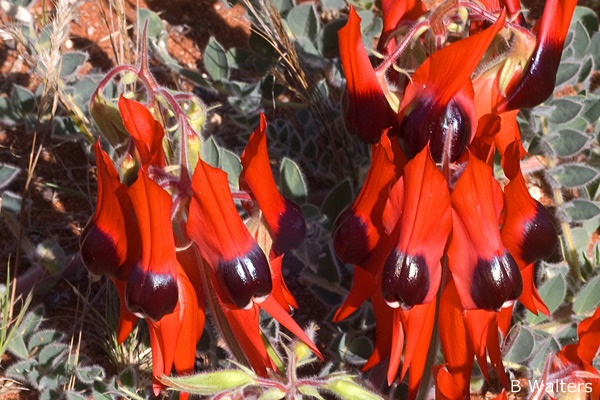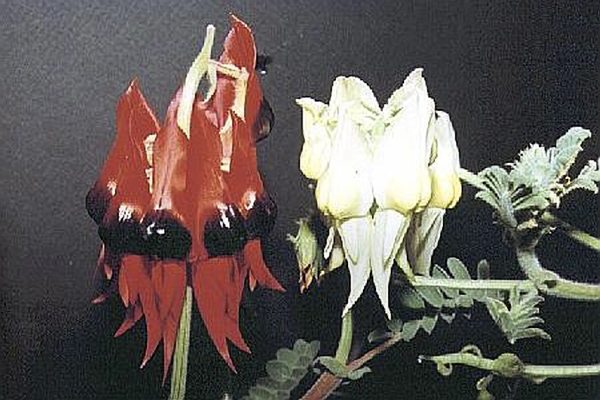General Description:
Sturt’s Desert Pea (named after the early explorer, Charles Sturt) is the floral emblem for South Australia. The plant was previously known as Clianthus formosus until a reclassification placed it in the genus Swainsona. Although the change has been generally accepted, the plant does differ significantly from other swainsonas. As a result, Alex George (well known to many for his work in the revision of Banksia and Dryandra and for his work on the Flora Of Australia project) proposed a name change in the ‘Western Australian Naturalist’ in 1999. He called the plant Willdampia formosa in honour of the explorer William Dampier. While this change is historcally appropriate (as the species was one of over 20 species originally collected by Dampier in Western Australia on 1 September 1699), the proposal does not seem to have received broad acceptance.
Whatever the final consensus on the botanical name, Sturt’s desert pea is one of Australia’s best known wildflowers and certainly has no equal in the Pea family.
The classic desert pea flower is a deep scarlet or red on the standard, keel and wings with a black or dark red boss (the enlarged structure at the centre of the flower). Individual flowers are about 90mm long and are borne in groups of 5 or 6. In nature many colour variations are known, ranging from red through pinks to yellow and even albino forms. Pea flowers consist of 4 petals; the “standard”, the “keel” and two “wings”. In the desert pea, the petals are considerably distorted from the “typical” pea shape as to be almost unrecognisable as a member of the pea family.
S.formosa is usually a prostrate species with hairy, grey-green foliage comprising up to 15 oval-shaped leaflets. Forms growing to about 2 metres in height are known from the Pilbara region in north-Western Australia.
In cultivation the desert pea is regarded as difficult and few people attempt to grow it. However it can be grown successfully in many areas if treated as an annual. Success is often reported by growing the plant in a deep container an a sunny, frost-free position. Flowering occurs from winter through to summer.
Propagation is best from seed which should be pretreated by scarification (using sheets of sandpaper) or by soaking in hot water (further details can be found in under the “Propagation” tab of the “Pea Family” page). Seed is best sown where the plants are to be grown as seedlings are reported to be difficult to transplant. Sowing in late winter or early spring would be best if frost is a problem.
Propagation can also be carried out from cuttings or by grafting using the related species Clianthus puniceus (native to New Zealand) as root stock.

Swainsona formosa in its natural habitat
Photo: Brian Walters

Swainsona formosa — close up of the flowers
Photo: Brian Walters

A white form of Swainsona formosa with the usual
red form for comparison
Photo: Michael Tutt
Other Native Plant Profiles
 Australian Native Plants Society (Australia)
Australian Native Plants Society (Australia)













